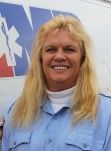
Eva Parfait
For the past seven years, Eva Parfait has led AMR’s “Safe Ride Home” project in the Jackson area. The project keeps hundreds of drunk drivers off the road every New Year’s Eve by offering free rides home for party-goers. Eva recruits co-workers to drive passenger vans rented for the project, pulls other resources together, contributes to media publicity and coordinates the vans’ travels through the night. Eva has also participated in several dramatic rescues in recent years. Last November, she responded to a scene with passengers in a vehicle that was upside-down in frigid rushing water. The current knocked a police officer off his feet, putting his life in jeopardy. Eva and others went into the water to pull the officer to safety.The Mayor of Jackson and the City Council publicly recognized Eva and the other rescuers. Eva has worked in the ambulance field for 24 years.The Mississippi EMT Association named Eva the statewide EMT of the Year for 2013 ?xad 2014. One of Eva’s sons followed her example and became a paramedic and EMS training officer for a city fire department. Eva is a newlywed, having tied the knot just this past January.”

Dale Montgomery
With more than 10 years in emergency medical services, Dale has evolved into one of Clackamas County’s most valued and dedicated paramedics. His drive to keep his clinical skills at peak performance and his deep knowledge as a paramedic were especially apparent during an off-duty cardiac arrest save at a local soccer field. After finishing the first half of an adult league soccer game, Dale heard yelling from the opposite side of the field and quickly realized that someone needed medical help. Dale found the patient with agonal respirations and no pulse. With the help of a physician on the scene, Dale coordinated efforts to maintain quality CPR and ventilation while a bystander ran to a nearby school for an AED. Dale attached the AED and administered a single shock which returned spontaneous circulation and lead to the patient regaining consciousness. The patient was transported to the hospital and later discharged.The cooperation from both medical and non-medical bystanders during this event has lead Dale to spearhead various initiatives in the Clackamas County area to encourage early intervention, including the training of local soccer coaches and players in CPR and AED use. Dale has been the recipient of both the Clackamas Fire District Board of Directors’ Community Life Saving Award and the State of Oregon’s EMS Life Saving Medal. His off-duty efforts to train others to save lives and his unwavering commitment to the community he serves make Dale a genuine Star of Life.”

Michael Marsh
Mike has worked in the EMS industry for more than 18 years, and has earned a strong reputation as both a leader and expert in operational disaster response. On July 6, 2013, after notification of a large airliner crash at San Francisco International Airport, Mike set into motion the San Mateo County EMS MCI Plan, and was quickly assigned to EMS Branch Officer by the Incident Commander. There is no question that Mike’s actions and leadership on this day saved lives. One of AMR’s most valuable disaster resources, Mike co-commands the San Mateo County’s Regional Tactical Medical Resources, serves as Chairman of the San Mateo County Mass Casualty Incident Committee and is the Northern California Disaster Response Coordinator for AMR’s National Disaster Response Team. Mike has also provided subject matter services to the Department of Homeland Security on disaster-related issues. In addition to the Asiana crash, Mike also played a pivotal role in the management of AMR’s response to the San Bruno gas explosion; and has personally responded to Hurricanes Gustave and Ike. In his day-to-day role as Field Supervisor, Mike helps to manage AMR’s 911 operations in San Mateo County, which experiences more than 42,000 calls a year. AMR’s success in San Mateo County is tied directly to Mike’s constant focus on rapid response and efficient delivery of services. Mike Marsh is a valued member of AMR’s team and dedicated professional, and we are proud to honor him with the Star of Life Award.”

Nicholas Long
AMR Paramedic Nick Long does it all and does it beautifully. Trained as both a field caregiver and as a call-taker/dispatcher, he is quick to fill empty shifts in either duty area or to come in for long distance patient transfers. Nick is an ACLS instructor, a critical incident stress debriefer and is the commander of his operation’s honor guard. As a member of AMR’s national disaster response team, Nick has been deployed for three hurricanes, including two weeks for Superstorm Sandy. In addition, Nick finds time to volunteer as a preceptor in a local college EMS training program and he contributed substantially to training 300 folks in Wichita Falls during AMR’s 2013 World CPR Challenge. Wait, there’s more! Nick is one of Wichita Falls’ court-appointed child advocates. In that role, he works with other child advocates to safeguard abused and neglected children. He helps attorneys assemble and present their cases for children assigned to him. He recently headed the planning and fundraising committee for the advocate group’s annual 5K benefit race. Nick and his wife are also active with a familyfocused children’s theater. He is an actor, director and set builder. In nominating Nick, his general manager said, “Nick is an excellent role model for those already in EMS and those who wish to join our profession.”

Melissa Hudson
Melissa Hudson’s career with EMSA dates back to June 1992. She started as an EMT-Basic, and was quickly promoted to a preceptor before moving into EMSA’s 911 communications center. Melissa has achieved Emergency Medical Dispatch and EMD-Quality certification. Over the years, she has helped train scores of new dispatchers and has talked thousands of callers through CPR, emergency childbirth, basic trauma management and other life-saving interventions. Recently, Melissa was honored by the Tulsa City Council for her role in rescuing a newborn baby born prematurely at home. When not saving others, much of Melissa’s time and energy is devoted to her own personal battle with ovarian cancer. Melissa continues to work a full-time schedule while undergoing chemotherapy treatment.”

John Gosford
John has 25 years of experience in EMS, having served in a variety of field and non-field roles including paramedic, dispatching, education and regulatory services. He currently holds a Master’s degree in Public Safety Leadership and is working on his Ph.D. in Emergency Management. While working as an Assistant Professor in the EMS program at the College of Southern Maryland, John has continued to work as a paramedic at American Medical Response in Washington, D.C. John’s dedication to providing a positive impact on patient care is evident as he readily assists and mentors other field providers.”

Salvatore DeLucia
Sal DeLucia began his career in EMS in Vermont then moved back home to Connecticut where he continued his career as an Emergency Medical Technician first for Flanagan Ambulance and then for New Haven Ambulance Service in New Haven, Conn. As a dedicated, hardworking EMT, Sal advanced to the Paramedic level in 1988. His strong commitment to patient care enables him to mentor many of his colleagues and he is widely recognized as one of the most knowledgeable, committed Paramedics in the region. He always demonstrates the AMR core values while anticipating a patient’s needs, safety and comfort. As a Paramedic and Field Training Officer, Sal has inspired many of his peers while dedicating himself to his profession. He regularly attends local municipal emergency management meetings. He presented a plan to the community of Orange, CT to adopt a “Heart Safe Community.” Sal worked with local businesses, volunteer agencies and business leaders to purchase CPR assist devices for the town. He then conducted CPR training for the town’s employees and EMS providers. At a recent standby community event, a patron went into cardiac arrest in front of Sal and the EMS team. Sal successfully guided the team in patient care, providing early CPR and ALS protocols resulting in a CPR save and the patient ultimately discharged from the hospital.”

Christopher Brown
To say that Chris Brown wears many hats would be an understatement. Not only is he a full-time Paramedic in one of the largest EMS systems in the region, but he is also an ordained minister, a Chief Warrant Officer in the American Volunteer Reserves, a member of the Memorial Honor Guard at Riverside National Cemetery, and President of AMR Riverside’s CARE team. A former member of the Seventh Medical Battalion in the US Army, co-workers describe Chris as a caring and understanding individual willing to go out of his way to help others in need. Whether seeking financial donations for employees that have experienced major medical events, or collecting toys for needy children and dressing up as Santa Claus, Chris never hesitates to come to the rescue. When Chris met a certain elderly patient who was living in deplorable conditions, failing to take her medications and calling 911 two to three times a day, Chris befriended the woman and began taking her to church and on outings with his family. Eventually Chris was able to convince her to move to a board and care home. She is now healthier and happier. Chris’ commitment and actions both on and off-duty are exceptional, and he is truly deserving of the Star of Life award.”

Jonathan Blackwell
The night of July 31, 2013, EMT Jonathan Blackwell visibly demonstrated the bond between members of an ambulance crew. That night, Jonathan and his partner, Jennifer Hesselbein, were evaluating a patient lying in the middle of the street. Suddenly, Jonathan saw a vehicle veer across the double yellow line and head straight towards them. He yanked Jennifer from certain death. The out-of-control vehicle killed their patient and nearly killed Jennifer, knocking her under the ambulance. Jonathan pulled her from beneath ambulance, called for backup and helped her until more AMR crews arrived. Jonathan was unharmed but Jennifer suffered numerous severe injuries from head to toe on her left side. She underwent 18 surgeries. She spent months in a surgical ICU and weeks at a rehab hospital. She went home in a wheelchair on December 5. Almost every day, Jonathan was at the hospital, doing anything he could for “Jenn” and her family. He helped organize and conduct fundraisers to defray Jennifer’s medical expenses. Jonathan speaks about his experience at EMT classes and first responder courses as part of safety education. Known to everyone as “Popcorn,” Jonathan became an EMT in 2011. He was promoted to field training officer last year. He is openly admired by his co-workers for strong clinical skills and deep compassion.”

Deonarine Balliram
Deonarine joined Global Medical Response of Trinidad and Tobago Limited (GMRTT) in 2005 as an Emergency Medical Technician (EMT). Every day he demonstrates his commitment and expertise as an Emergency Medical Technician as he sets the standard for the organization. Deonarine is currently an EMT Preceptor and is responsible for the training and development of newly certified EMTs. This program nurtures skills, offers professional guidance and ensures clinical expectations among staff are met and helps provides customer service skills. This new role revealed Deonarine’s gift as a gifted teacher and role model. Deonarine was active in the 2013 World AMR Compression Only CPR Challenge, and since the event he has been conducting CPR training to communities, schools and non-profit organizations on a voluntary basis. He is currently finalizing his CPR Instructor Certification with the National Safety Council and is in the process of pursuing the American Heart Association First Aid & CPR Instructor Certification. In addition to being a full time, nationally-registered EMT, Deonarine has also been a lifeguard with the Trinidad and Tobago Lifeguard Service for the past 10 years. When he is not working for GMRTT, Deonarine spends his weekends and holidays protecting the beaches of Trinidad. He is also a Lifeguard Training Instructor for both swimming pool and open waters. Deonarine has received the Trinidad & Tobago Life Saving Society’s Award of Merit and Bronze Medallion. Deonarine is also a certified aerobics and fitness instructor and provides fitness training and instruction voluntarily in his community. Deonarine is also a member of the Trinidad and Tobago Defence Force Reserve. Deonarine is a husband and father of four. He is described as a humble, outgoing individual and contributes in any way he can to his co-workers, his community, and even patients and their relatives. Deonarine says he loves swimming, fishing, cycling, running, basketball and working out in the gym.”

Dallas Arenas
Dallas became an EMT in August 2009 after losing a close family member in a motor vehicle crash. She felt helpless after her loss, so she decided to become an EMT and thought it would be a great way to help others. Dallas was hired by AMR Massachusetts in July 2010 where she gained experience running both IFT and 911 calls. Dallas transferred to the D.C. operation in 2012 after moving to the area and obtaining her National Registry EMT certification.While working at AMR, Dallas became interested in various aspects of EMS, so she applied to a local community hospital in southern Maryland. Dallas is in a dual position at the hospital, holding job titles of Hyperbaric Safety Director and Hyperbaric Chamber Technologist. Dallas hopes to further her career in EMS, so she is attending paramedic school at the College of Southern Maryland and is in her second semester. Dallas is a highly motivated individual and has hopes of obtaining an Associate’s Degree in EMS within two years. Since 2012, Dallas has been an active member of AMR’s Emergency Response Team and looks forward to being deployed as needed.”
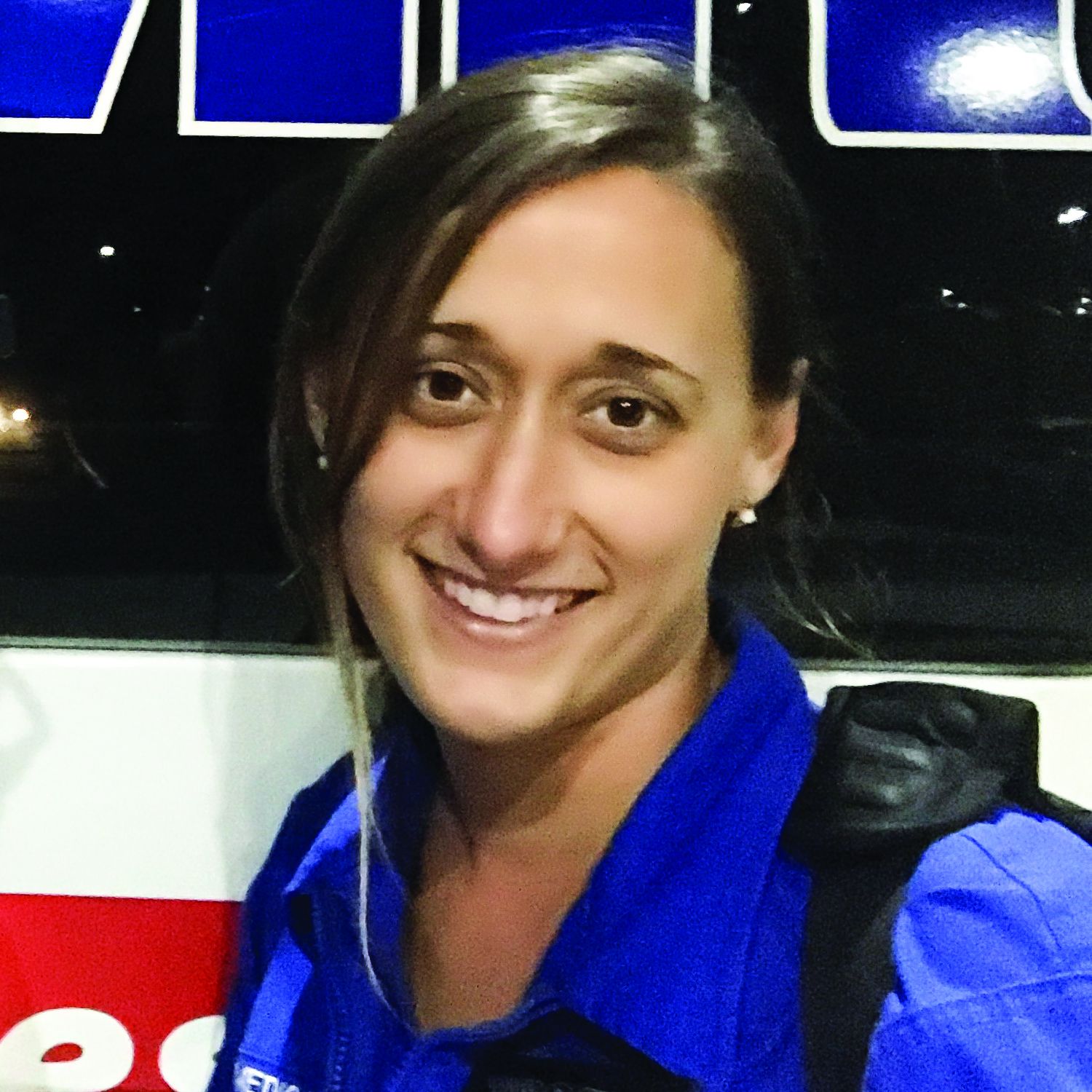
Lindsey Duff
Lindsey Duff consistently goes above and beyond the call of duty. She often volunteers on missions during her off-time, some of which take Lindsey away from home for days or weeks at a time. One of these volunteer missions was a very complex bariatric transport to the Middle East. No other company had the resources to complete this mission. Lindsey was responsible not just for patient care, but also for the wellbeing of another medical crew member who became seriously ill during the lengthy transport.
During AMR Air Ambulance’s more than four-month FEMA deployment to the U.S. Virgin Islands for Hurricane Irma and Maria relief, Lindsey spent six weeks on duty with just two breaks, each lasting less than a week. Lindsey voluntarily sacrificed her personal time as well as the holiday season to support the Virgin Islands community. Lindsey is truly a selfless and loyal Flight Nurse who facilitated challenging patient evacuations while living in sub-optimal conditions in a post-disaster zone.
Lindsey received positive recognition from other Air Medical programs for her energetic and “can do” attitude, and represented our organization with honor. AMR Air Ambulance is extremely proud to have Lindsey represent our organization as a 2018 Star of Life!
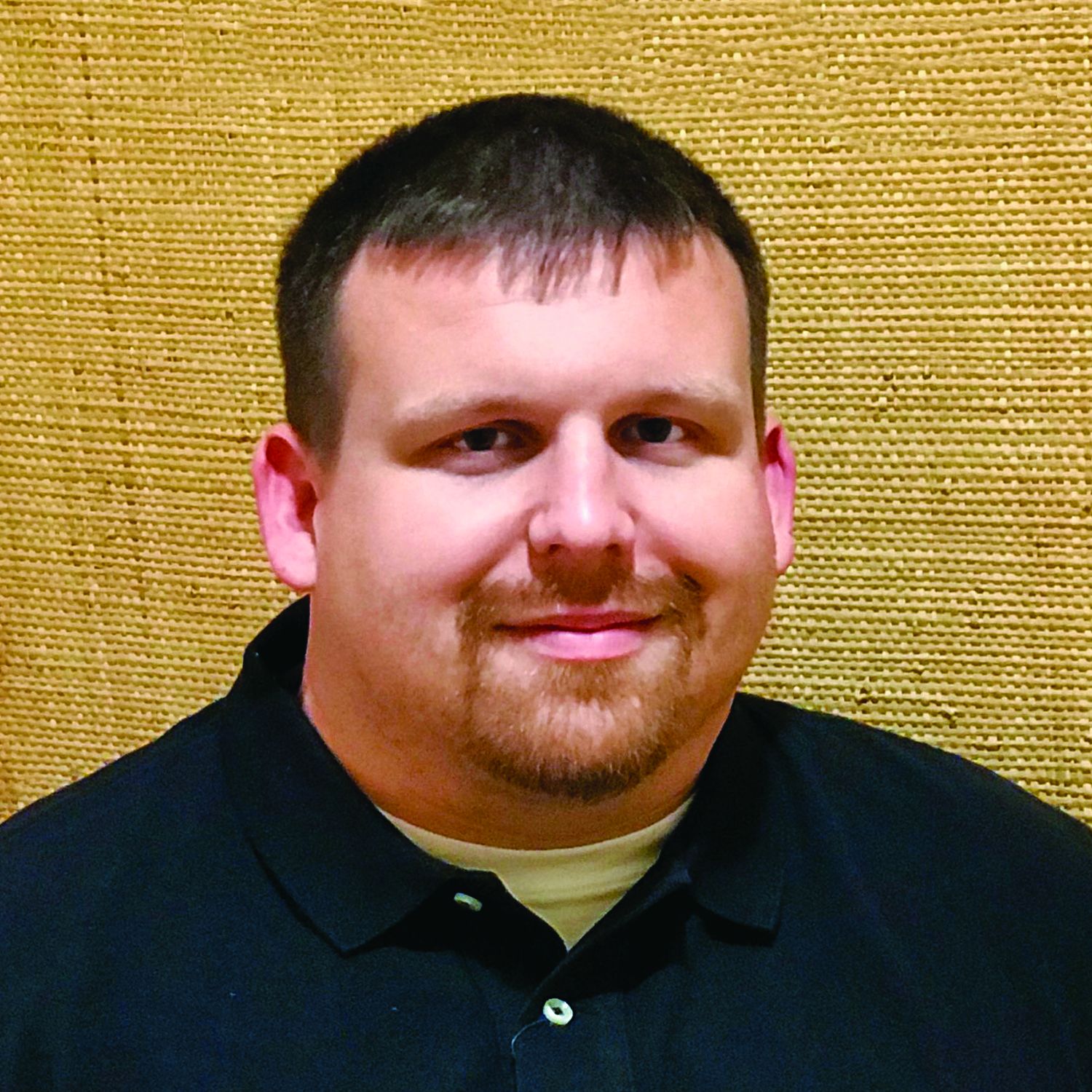
Randy Nichols
Randy Nichols has been a part of AMR in LaGrange, Georgia for four years. He started as an EMT, then quickly progressed to Paramedic. During this time, he has also assumed additional responsibilities including Field Training Officer, Shift Supervisor, Disaster Response Team member, Director of Education, and part-time fleet mechanic, all while making sure that the 74 people in his EMS family feel welcome.
One day, Randy asked if we could launch some educational classes for staff. Once he got the green light, he was off and running; taking on all aspects of the project from ordering books to researching the Georgia licensure requirements. Randy created an EMT Basic Class and an AEMT Class, while simultaneously developing three Level 3 instructors. Word has gotten out about the success of the AMR LaGrange education programs. We are now hosting four classes and have a waiting list, all because Randy recognized we needed to do better as an industry in teaching the next generation.
Randy’s compassion for his team and his “never say no” attitude empower him to help staff of all experience levels, from new recruits on day one of employment to seasoned staff with 20 years of service history. As Randy would say, his goal is “Making AMR great in two thousand one eight!”
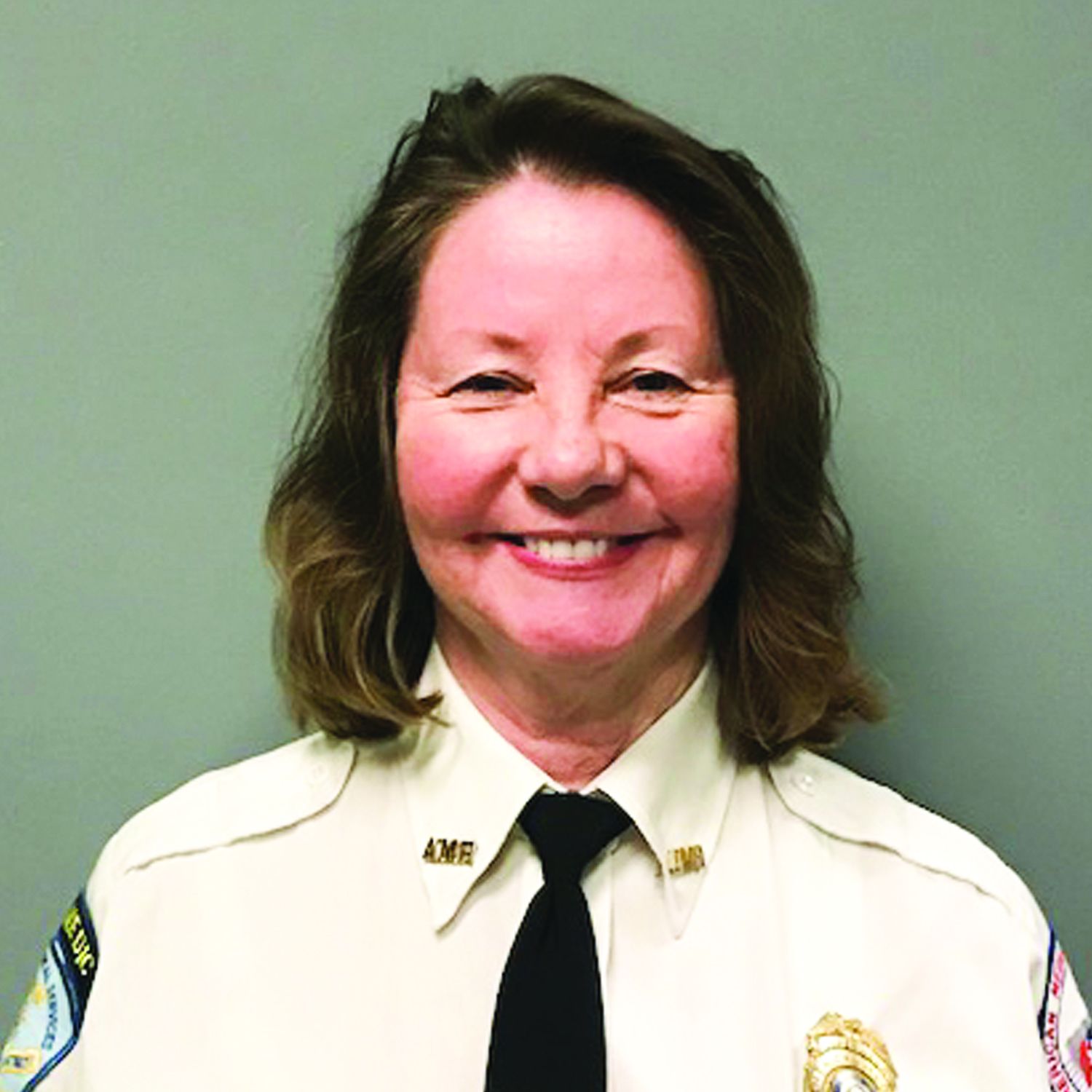
Rosemary O’Keefe-Kirschner
Rosemary O’Keefe-Kirschner truly embodies the best of AMR-New Haven. She is its heart and soul, and there is not an employee who has not been positively affected by Rosemary. She constantly looks for ways lend a helping hand to her coworkers and her community.
Rosemary is the kind of person who is always looking out for those around her, no matter what she herself may be going through personally. She is truly a selfless individual who will stop at nothing to help someone in their time of need.
The entire New Haven staff looks up to Rosemary. She is the Paramedic colleagues go to for advice, mentorship, or to discuss a difficult call.
Rosemary has been honing her skills and serving this community for 39 years. In an interesting parallel, these skills which were recently demonstrated when she had a code-save of a 39-year-old woman. Thanks to Rosemary’s knowledge and experience, this young mother of three returned home to her children.
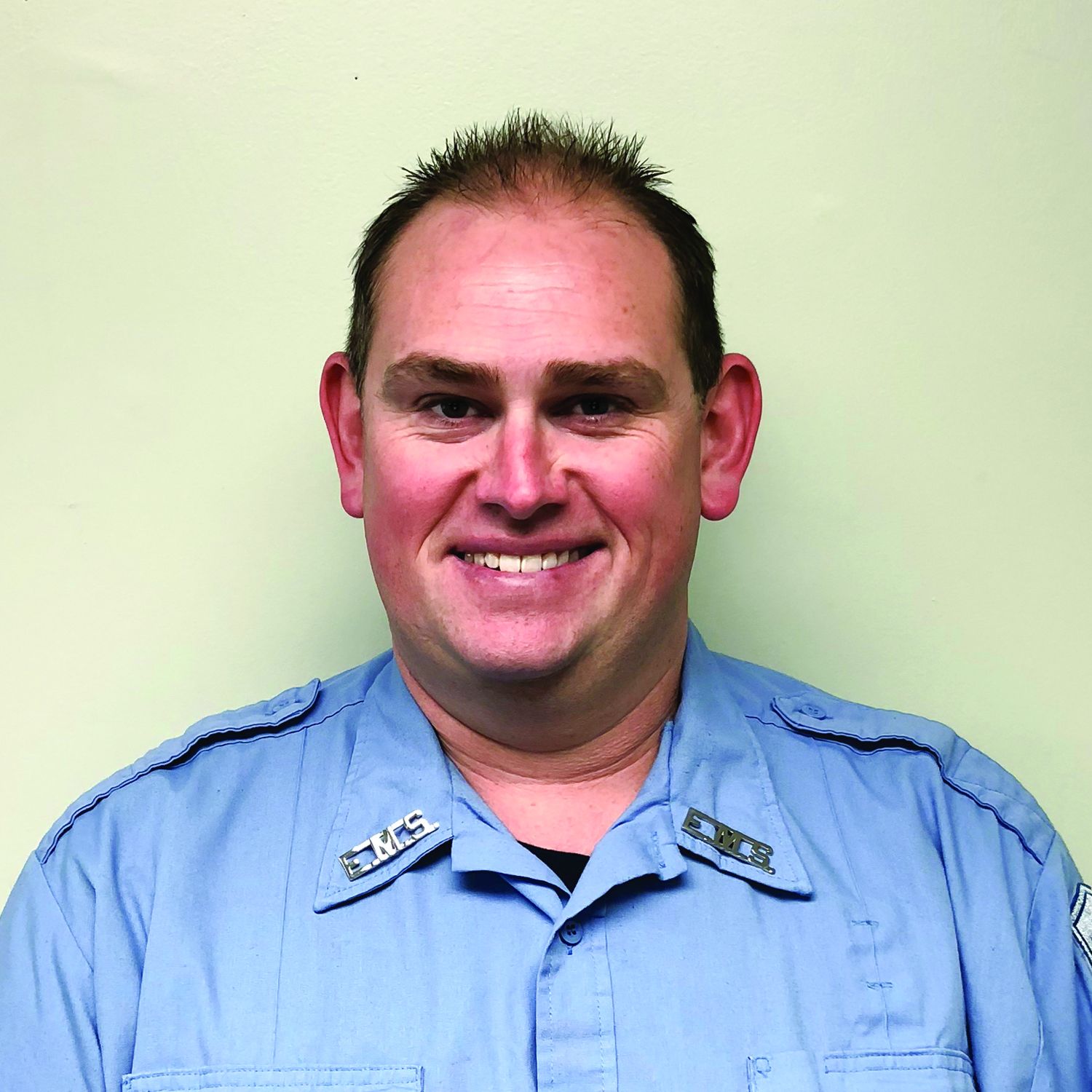
Michael Schwenke
Mike Schwenke is a respected member of the EMS community in Effingham, Illinois, and has been for 14 years. He enjoys teaching almost as much as he loves being a Paramedic. Throughout his career, he has taught countless numbers of first responders, EMTs, and Paramedics. Mike excels in his teaching, and wants to make sure his coworkers can meet the same standards of excellence he holds for himself. While Mike has only been with Abbott EMS for one year, his dedication to the profession has proven invaluable to our operation.
Mike wants everyone to be knowledgeable, and is always first to answer questions from his team and others. He took the time to meet with local hospitals and train them on Abbott’s preferred airway devices, as they had not previously used the i-Gels brand. Mike also met with the local fire departments to improve communication and collaboration on emergency calls.

Andrea Strongman
If you are lucky enough to be partnered with Andrea Strongman, the chances of your having a slow shift are low: She has a reputation for being dispatched whenever a big event or rough call occurs. This reputation was solidified on October 8, 2017, when a devastating fire hit the Sonoma Valley region.
Andrea and her partner were working the night shift when the fire began. High winds quickly spread the fire across the region, knocking down power lines and inundating the area with smoke and ash. The pair were dispatched to evacuate a paraplegic patient from his home, which was in the direct path of the fire. They arrived to find the house engulfed in flames with no firefighting resources available. Despite making every effort to gain entry, the flames were so hot and destructive it became clear the fire would prevent any further rescue efforts.
Distraught, Andrea and her partner had to compose themselves so they could continue to run calls being dispatched that night. Together, they performed countless residential, hospital, and skilled nursing facility evacuations, in addition to emergency medical transports to the ERs that were still open.
Andrea accomplished all of this in the midst of consoling and reassuring several of her colleagues who had lost their homes. Andrea’s partners may not always benefit from her reputation, but without question her community and her patients do.
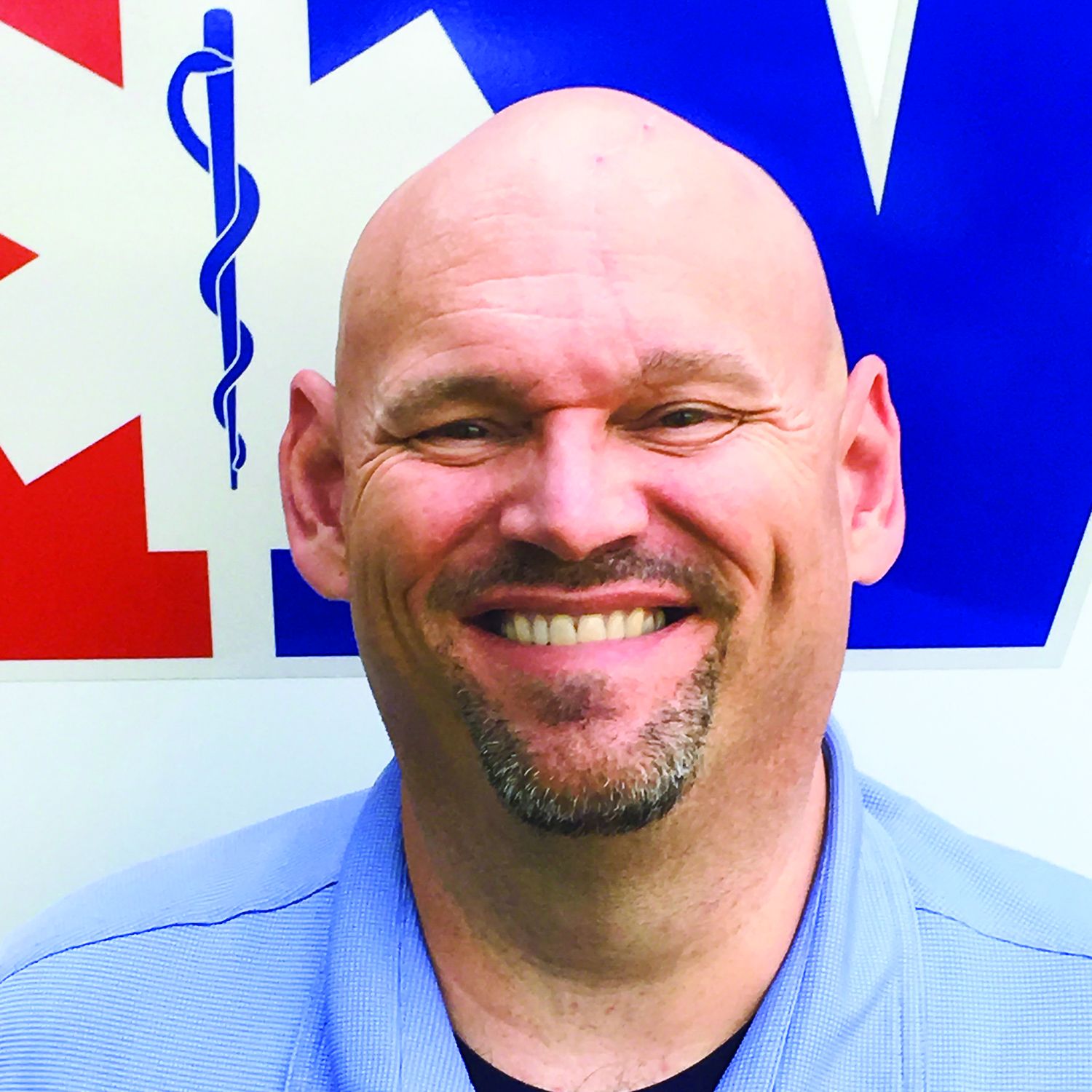
Jimmy Miller
Jimmy and his partner were returning a patient to his nursing home when another vehicle smashed into their ambulance twice, flipping the truck onto its side. Jimmy suffered potentially life-threatening head, neck, and chest injuries.
Despite his serious trauma, Jimmy continued to focus on his patient. Jimmy told rescuers to remove his patient from the ambulance first. At the hospital, from his own stretcher, Jimmy saw his patient wheeled by. Jimmy called out to the patient’s nurse and gave her a detailed report, just as he does with anyone in his care.
While recovering, Jimmy missed four months of field work. During that time, Jimmy taught classes as one of his operation’s Field Training Officers.
Jimmy’s supervisors said, “He is excellent in all that he does. Jimmy personifies everything a Paramedic should be: skilled, deeply compassionate, a patient advocate, and a mentor to his colleagues.”
Jimmy is also known for helping his co-workers with their personal needs. As one co-worker said, “I think helping others is simply in his genes.”
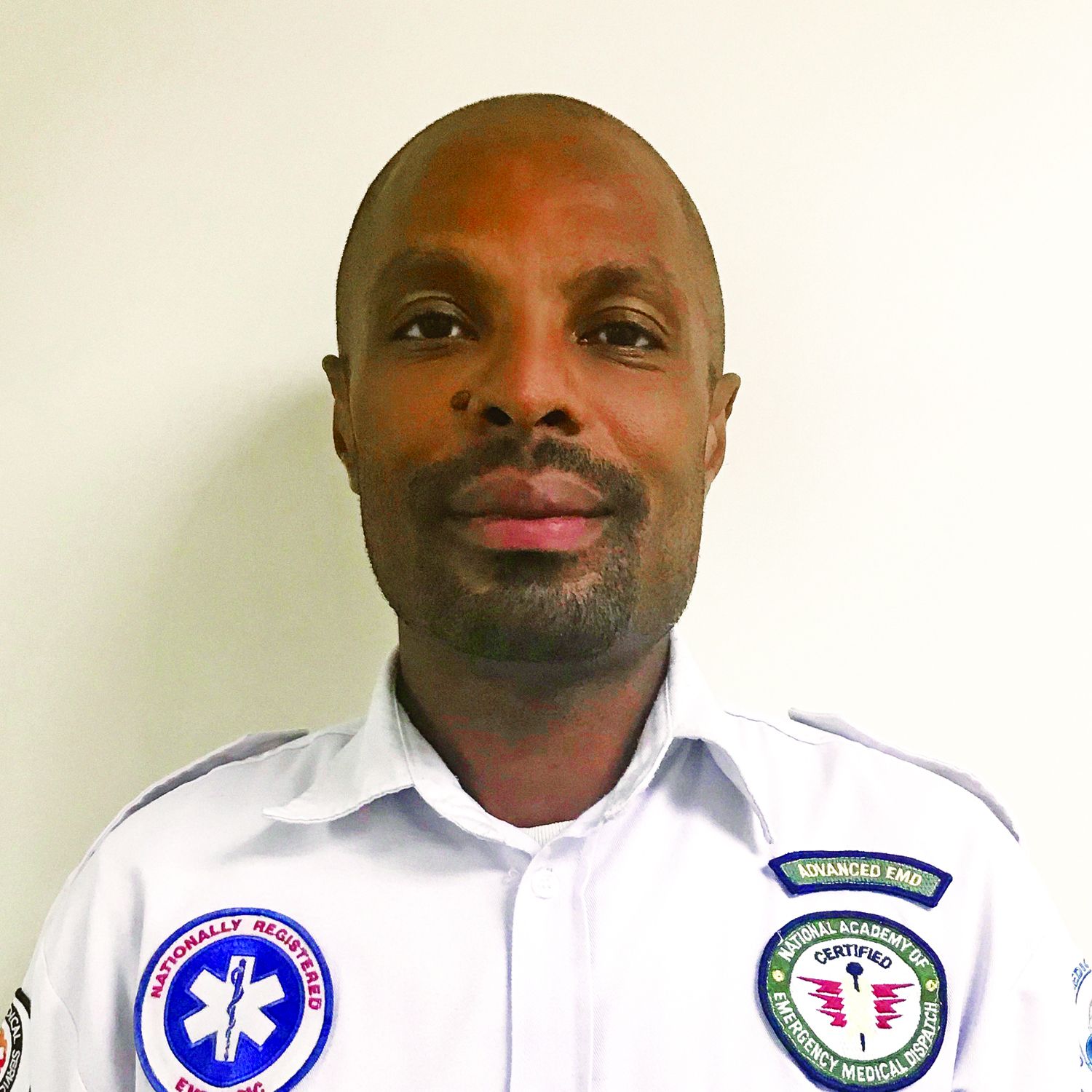
Duane Lessie
Duane has been a member of Global Medical Response of Trinidad and Tobago (GMRTT) for just over 11 years. Duane is deployed in field operations as an Emergency Medical Technician; however, prior to this he has served in the Communications Department as a System Status Dispatcher. Duane is also currently enrolled in the company’s Paramedic certification program which aligns with his career path of advancing his skills as an EMS professional. Duane often serves as a mentor for new EMTs.
Duane’s passion for helping others extends beyond the corridors of GMRTT. He is currently the Health Coordinator for the Bournes Road SDA Church. In addition to this, Duane conducts compression only CPR training at schools in his community, where he volunteers providing fitness training, thereby encouraging healthier lifestyles. Duane is known for lending his passion for fitness and health to his community. Therefore, it came as no surprise when Duane agreed to the request by the Petit Valley Football Club to provide his services as a physio trainer, assisting the team to the league championship.
Duane wears his heart on his sleeve, and it is because of these attributes he has been nominated resoundingly by his peers to be the 2018 GMR Star of Life.
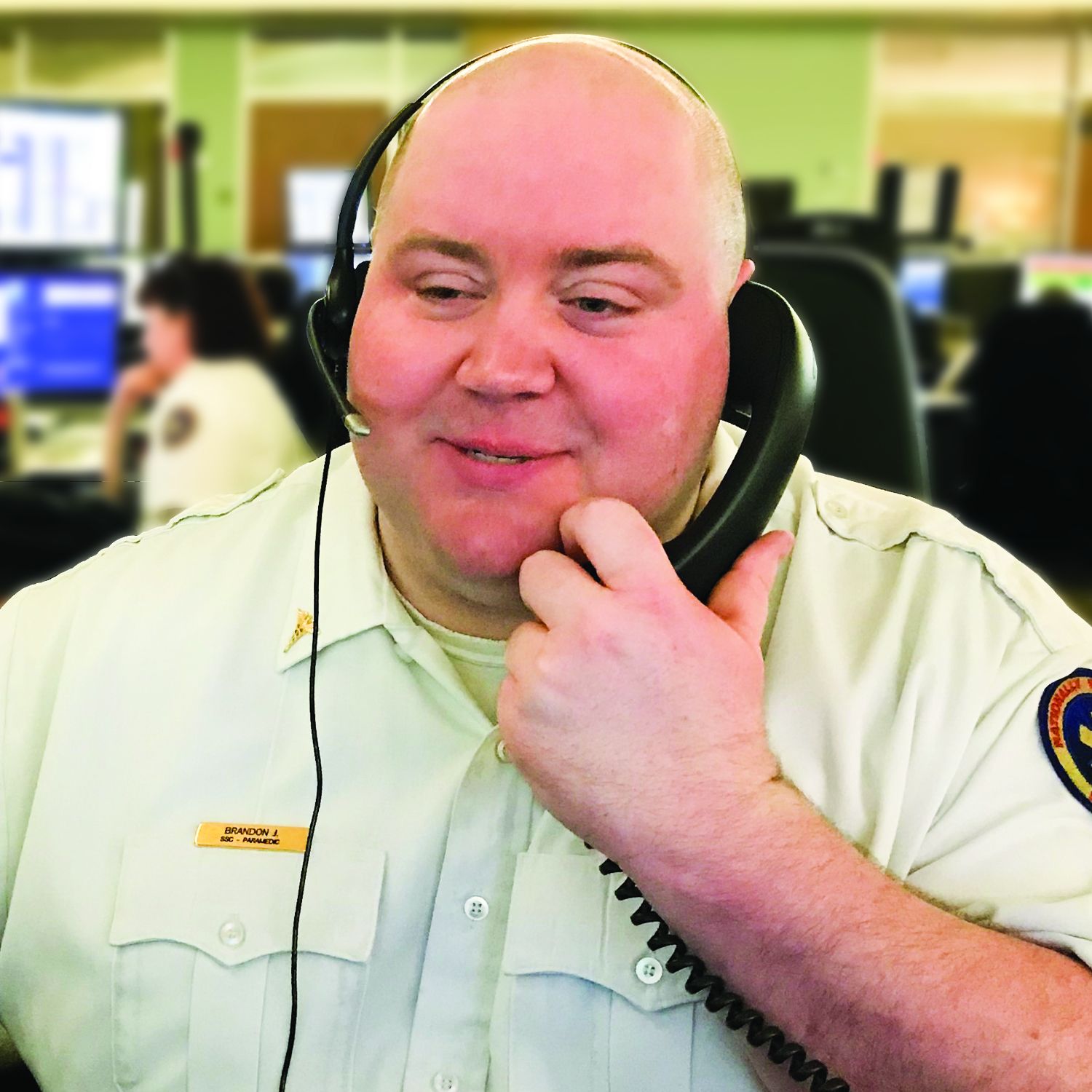
Brandon Jones
Some people are known to wear their hearts on their sleeve. Brandon Jones is known to wear his life’s mission on his forearm – literally. Two verses from the 82nd Psalm are tattooed on Brandon’s arm and speak to his commitment to be a servant and protector of those in need. It’s both ironic and poignant, given that Brandon has found himself in great need more than once.
Brandon joined the EMSA team as an EMT in 2009. He started Paramedic school in 2010, but battled alcohol abuse, financial crises, and ultimately, homelessness. With support from his EMSA family, Brandon got back on his feet, stopped drinking, and graduated. Brandon experienced a relapse after responding to an apartment fire that killed two children. Then, while working to maintain good health, Brandon suffered a devastating injury that took him off the ambulance. Brandon was offered a position as an Emergency Medical Dispatcher in 2014 and has since flourished, personally, and professionally. Brandon is renowned for making quick, strategic decisions, and for championing the interests of patients and field crews alike.
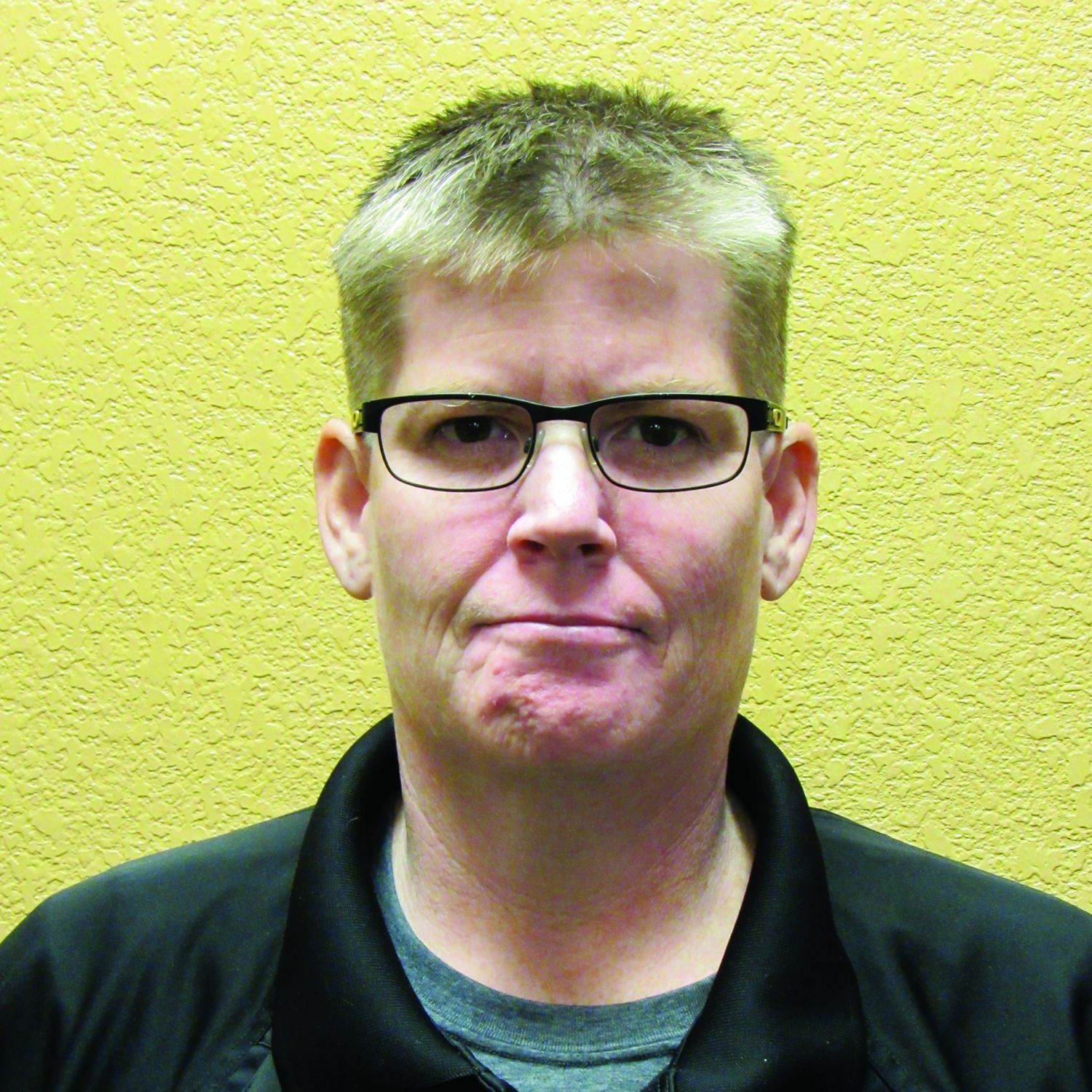
Sheri Jones
Sheri Jones is a hero of the October 1, 2017 Route 91 shooting. Sheri was part of the initial wave of providers responding to “man down” calls. Sheri made her way toward the incident, ending up at one of the nearby hotels, where she found victim after victim, all deceased.
The radio was assigning more and more calls as reports of multiple casualties and shooters flooded the system. Although her heart was broken by the carnage she saw, Sheri remained determined to help. She set up a triage area at the hotel and began sifting through hundreds of patients. She is credited with making a difference and saving many.
In her more than 25 years of service, Sheri has progressed from EMT to CCT Paramedic & Field Training Officers. She instructs EMTs at the local community college, volunteers for long distance CCT calls, and pitches in to help with anything else that needs to be done. Always a caring voice for even the sickest of patients, she can be counted on to be an advocate for her patients as well as her partners.